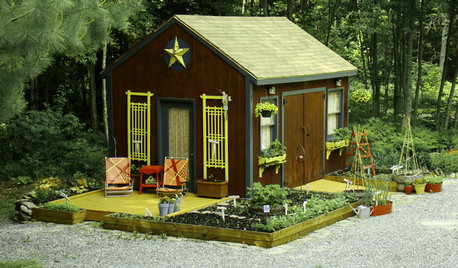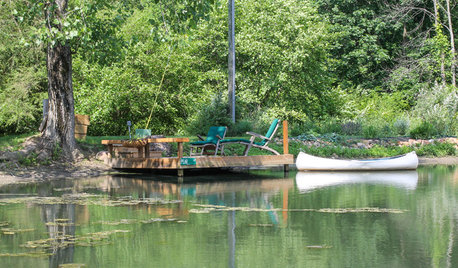Amendments for a No-Dig Raised Bed
raymondo17
9 years ago
Related Stories

GARDENING GUIDESGarden Myths to Debunk as You Dig This Fall and Rest Over Winter
Termites hate wood mulch, don’t amend soil for trees, avoid gravel in planters — and more nuggets of garden wisdom
Full Story
GARDENING AND LANDSCAPINGDig This Garden Shed Makeover for Less Than $300
New paint, accessories and raised vegetable beds turn a drab outpost into a colorful charmer
Full Story
GARDENING AND LANDSCAPINGBuild a Raised Bed to Elevate Your Garden
A bounty of homegrown vegetables is easier than you think with a DIY raised garden bed to house just the right mix of soils
Full Story
FARM YOUR YARDHow to Build a Raised Bed for Your Veggies and Plants
Whether you’re farming your parking strip or beautifying your backyard, a planting box you make yourself can come in mighty handy
Full Story
FARM YOUR YARDAdvice on Canyon Farming From L.A.'s Vegetable Whisperer
See how a screened garden house and raised beds help an edible garden in a Los Angeles canyon thrive
Full Story
GARDENING GUIDESLearn the Secret to Bigger and Better Roses
Grow beautiful roses using both ordinary and unusual soil amendments
Full Story
EARTH DAY5 Ideas for a More Earth-Friendly Garden
Consider increasing the size of garden beds, filtering rainwater and using plants to reduce energy use
Full Story
LIFEEasy Green: Modern Homesteaders Stake a Claim
With more options for raising chickens, growing edibles and keeping bees than ever, suburban and city folk are rediscovering a lost art
Full Story
MY HOUZZMy Houzz: A Dream of Country Living Comes True
A couple garden and raise chickens in their retreat-like historic Maryland property, learning as they go
Full Story
HOUZZ TOURSHouzz Tour: A Portland Bungalow Gets a Major Lift
Raising a whole house allowed 5 extra bedrooms and a walk-out basement — plus a boost in income
Full StoryMore Discussions






Kimmsr
toxcrusadr
Related Professionals
La Marque Landscape Architects & Landscape Designers · Lakewood Landscape Architects & Landscape Designers · Stoughton Landscape Contractors · Peabody Landscape Contractors · Kettering Landscape Contractors · North Ridgeville Landscape Contractors · Ridgewood Landscape Contractors · Wethersfield Landscape Contractors · Golden Valley Landscape Contractors · Suisun City Landscape Contractors · Auburn Decks, Patios & Outdoor Enclosures · Chandler Decks, Patios & Outdoor Enclosures · Glen Ellyn Decks, Patios & Outdoor Enclosures · Prichard Decks, Patios & Outdoor Enclosures · South Milwaukee Decks, Patios & Outdoor Enclosuresgardengal48 (PNW Z8/9)
raymondo17Original Author
gardengal48 (PNW Z8/9)
jean001a
Kimmsr
raymondo17Original Author
nancyjane_gardener
Kimmsr
Charlie